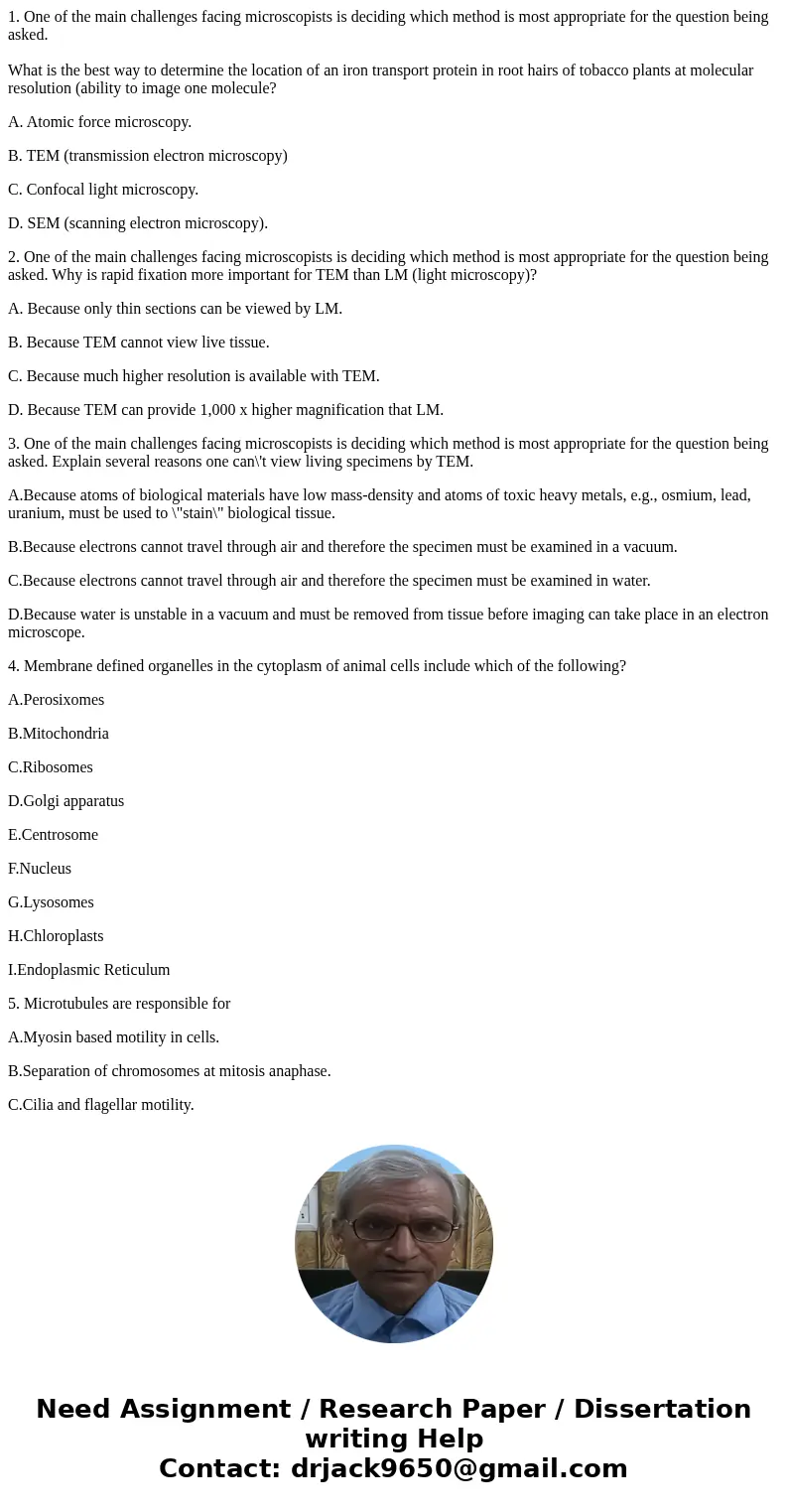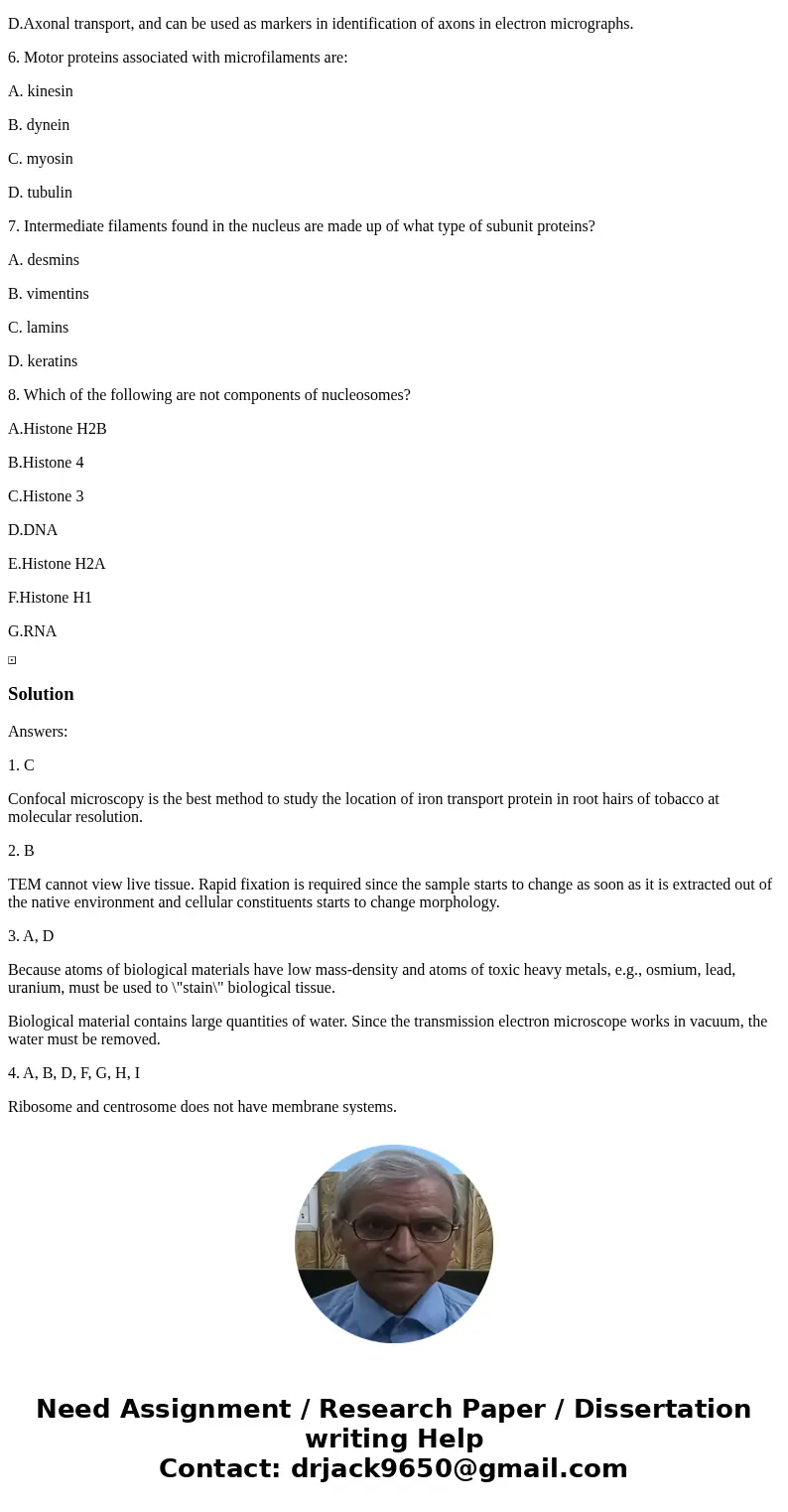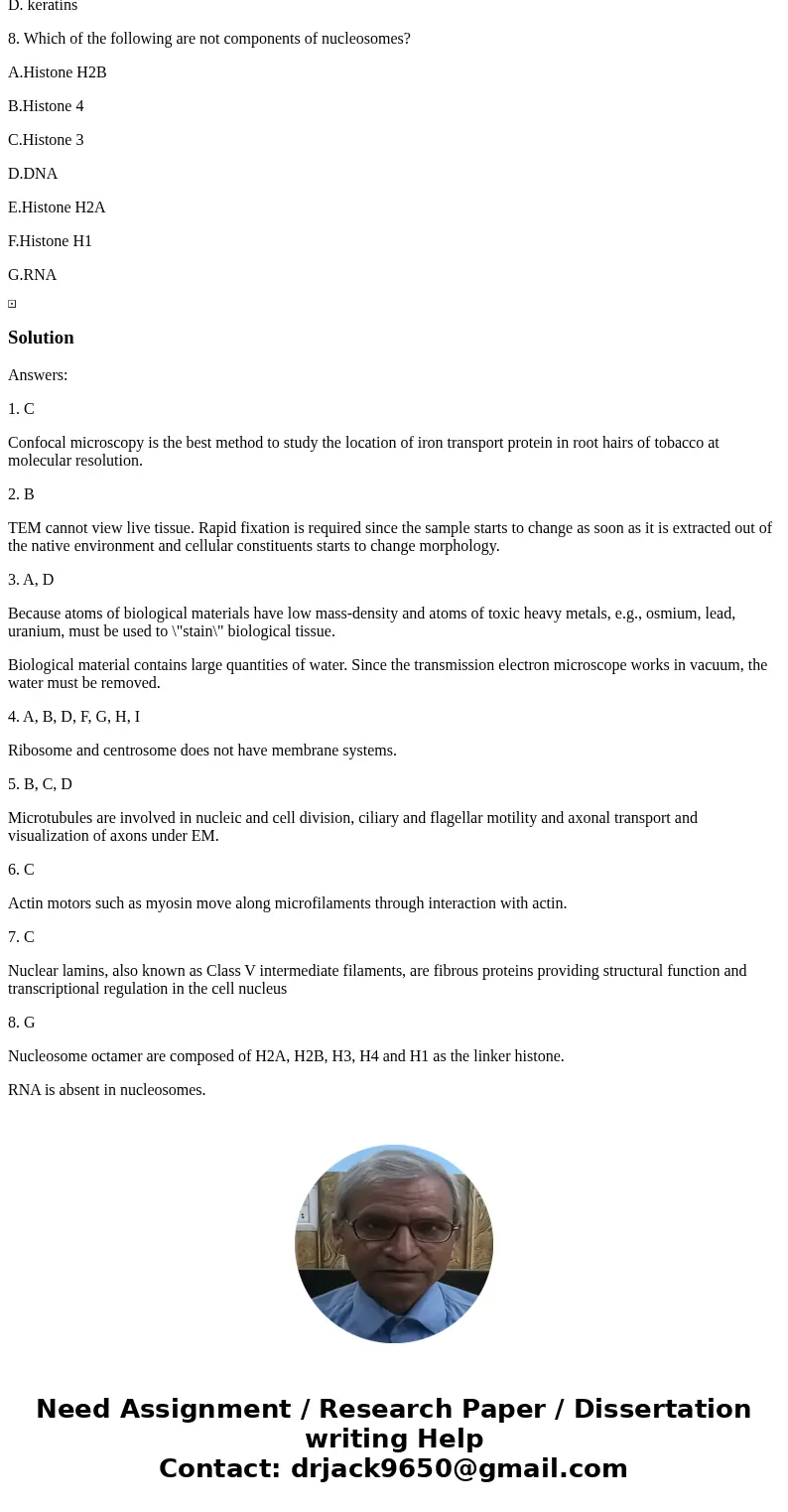1 One of the main challenges facing microscopists is decidin
1. One of the main challenges facing microscopists is deciding which method is most appropriate for the question being asked.
What is the best way to determine the location of an iron transport protein in root hairs of tobacco plants at molecular resolution (ability to image one molecule?
A. Atomic force microscopy.
B. TEM (transmission electron microscopy)
C. Confocal light microscopy.
D. SEM (scanning electron microscopy).
2. One of the main challenges facing microscopists is deciding which method is most appropriate for the question being asked. Why is rapid fixation more important for TEM than LM (light microscopy)?
A. Because only thin sections can be viewed by LM.
B. Because TEM cannot view live tissue.
C. Because much higher resolution is available with TEM.
D. Because TEM can provide 1,000 x higher magnification that LM.
3. One of the main challenges facing microscopists is deciding which method is most appropriate for the question being asked. Explain several reasons one can\'t view living specimens by TEM.
A.Because atoms of biological materials have low mass-density and atoms of toxic heavy metals, e.g., osmium, lead, uranium, must be used to \"stain\" biological tissue.
B.Because electrons cannot travel through air and therefore the specimen must be examined in a vacuum.
C.Because electrons cannot travel through air and therefore the specimen must be examined in water.
D.Because water is unstable in a vacuum and must be removed from tissue before imaging can take place in an electron microscope.
4. Membrane defined organelles in the cytoplasm of animal cells include which of the following?
A.Perosixomes
B.Mitochondria
C.Ribosomes
D.Golgi apparatus
E.Centrosome
F.Nucleus
G.Lysosomes
H.Chloroplasts
I.Endoplasmic Reticulum
5. Microtubules are responsible for
A.Myosin based motility in cells.
B.Separation of chromosomes at mitosis anaphase.
C.Cilia and flagellar motility.
D.Axonal transport, and can be used as markers in identification of axons in electron micrographs.
6. Motor proteins associated with microfilaments are:
A. kinesin
B. dynein
C. myosin
D. tubulin
7. Intermediate filaments found in the nucleus are made up of what type of subunit proteins?
A. desmins
B. vimentins
C. lamins
D. keratins
8. Which of the following are not components of nucleosomes?
A.Histone H2B
B.Histone 4
C.Histone 3
D.DNA
E.Histone H2A
F.Histone H1
G.RNA
Solution
Answers:
1. C
Confocal microscopy is the best method to study the location of iron transport protein in root hairs of tobacco at molecular resolution.
2. B
TEM cannot view live tissue. Rapid fixation is required since the sample starts to change as soon as it is extracted out of the native environment and cellular constituents starts to change morphology.
3. A, D
Because atoms of biological materials have low mass-density and atoms of toxic heavy metals, e.g., osmium, lead, uranium, must be used to \"stain\" biological tissue.
Biological material contains large quantities of water. Since the transmission electron microscope works in vacuum, the water must be removed.
4. A, B, D, F, G, H, I
Ribosome and centrosome does not have membrane systems.
5. B, C, D
Microtubules are involved in nucleic and cell division, ciliary and flagellar motility and axonal transport and visualization of axons under EM.
6. C
Actin motors such as myosin move along microfilaments through interaction with actin.
7. C
Nuclear lamins, also known as Class V intermediate filaments, are fibrous proteins providing structural function and transcriptional regulation in the cell nucleus
8. G
Nucleosome octamer are composed of H2A, H2B, H3, H4 and H1 as the linker histone.
RNA is absent in nucleosomes.



 Homework Sourse
Homework Sourse